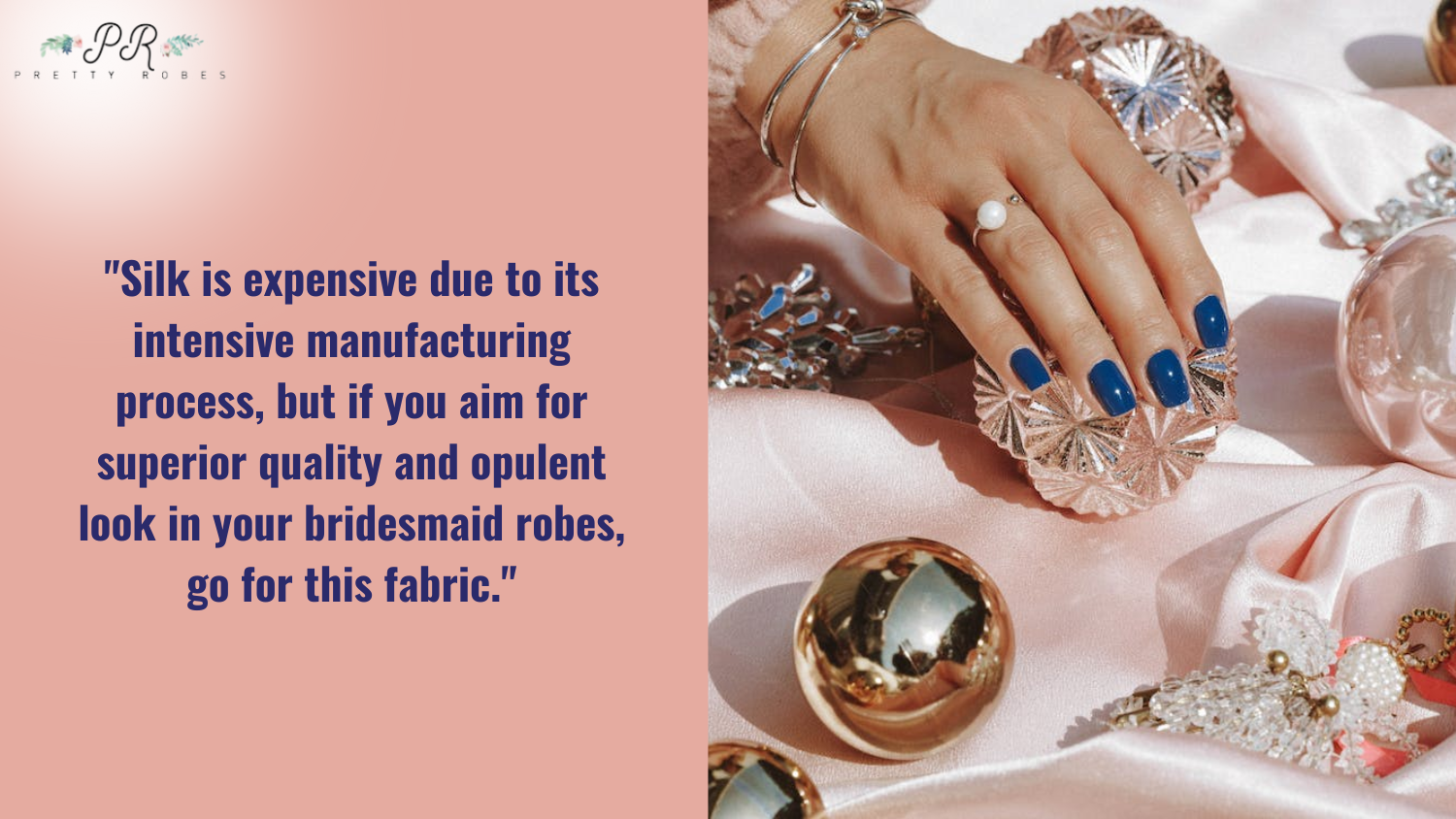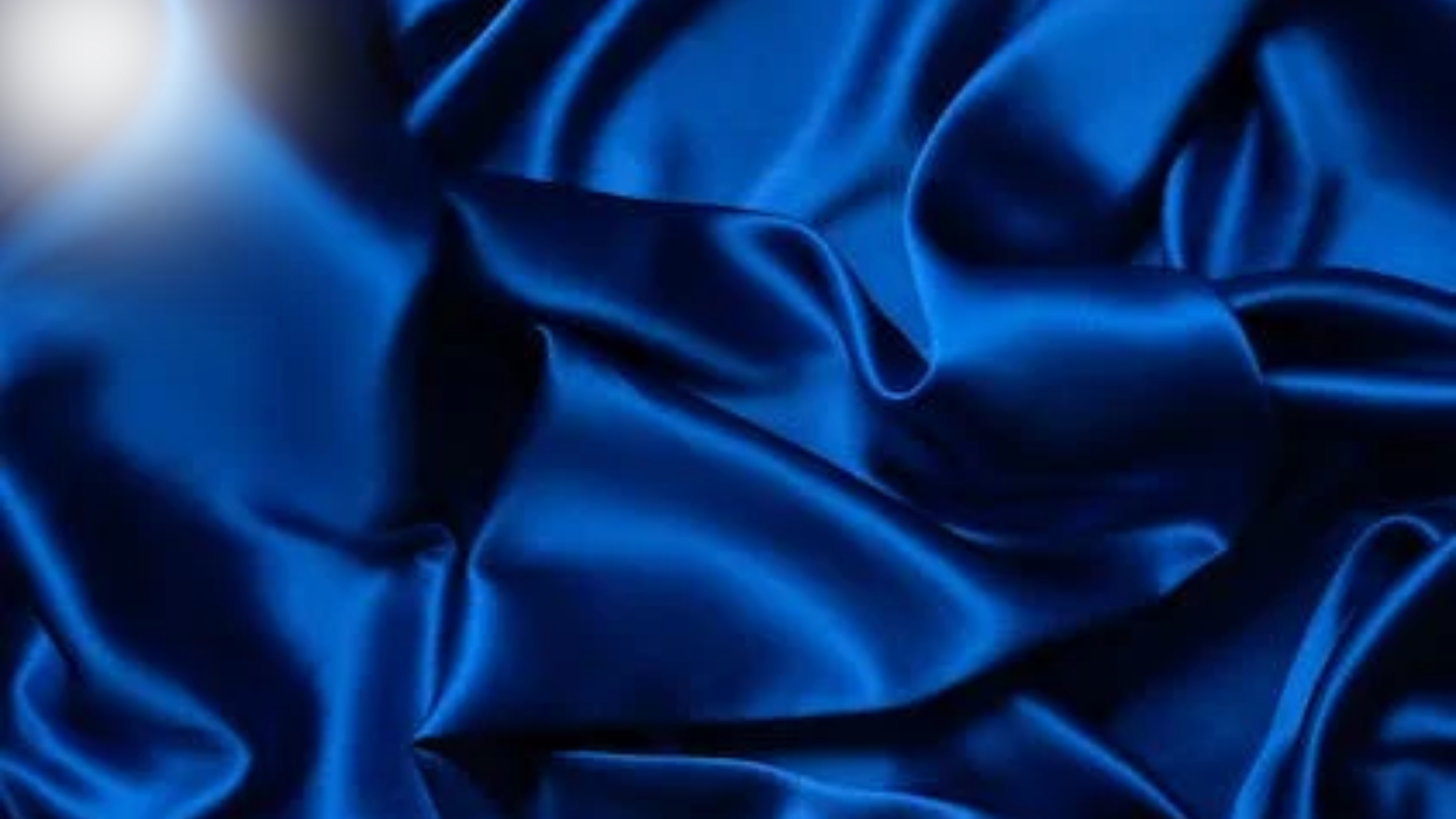The Best Fabrics for Bridesmaid Robes
There are already a lot on your plate planning for your wedding—party gifts, selecting a bridal gown, deciding with your fiancée or contributing family what major activities to add to the wedding timeline, picking the entourage, and many other matters that your fingers cannot count. Add to that the selection of bridesmaid robes that typically fall into the shoulders of a bride-to-be. All these obligations can weigh down on you sometimes.
For that, we are here to help you make an easier decision for selecting the bridesmaid robes in terms of fabric. You can buy the most expensive robes there are, but the price doesn’t guarantee the quality; the choice of fabric does. Before you choose robe styles, make sure you know which best fabric suits you, especially taking into account the fit, comfort, flexibility, handling, and match.
Fabrics differ in stretch, weight, flow, and texture. The best ones allow the wearer to move more freely and look great, nevertheless. Price matters too. Usually, the lighter the fabric, the lower the cost. Having carefully studied the niche for years, we can vouch for these choices for you:
Satin
When it comes to satin, cost-effective price and quality go together. Compared to its natural counterpart, silk, satin is way much cheaper, which is why you see a lot of satin robes for women on the bestseller list and all over wedding parties. Like silk, it has a glossy appearance with extreme durability and versatility. Satin is your go-to option if you have varied bridesmaid sizes, as it can fit almost any body type there is, and it is hypoallergenic!
 Satin is sometimes interchangeable with satin silk as it originally was created using silk, but modern satins are now usually made from rayon and polyester. Because of its flexibility, satin comes in a wide range of blends and weights. Bridesmaid robes typically use the lighter satin types for wearer comfort during the busy ceremony, including stretch, duchess, charmeuse, baronet, and georgette.
Satin is sometimes interchangeable with satin silk as it originally was created using silk, but modern satins are now usually made from rayon and polyester. Because of its flexibility, satin comes in a wide range of blends and weights. Bridesmaid robes typically use the lighter satin types for wearer comfort during the busy ceremony, including stretch, duchess, charmeuse, baronet, and georgette.
Stretch satin leads on the list when it comes to bridal wardrobe, as you can make a stretchable, body-fit robe out of it, emphasizing the bridesmaids’ and brides’ curves. Its elasticity comes from adding spandex, elastane, or Lycra to the usual mix. Soft and lightweight too, it creates a subtle sheen on your robes, with a definite lustrous appearance all throughout.
Duchess satin is another type to consider too. In fact, just as stretch satin, duchess satin is one of the leading types designers and sewers think about when making evening gowns, bridesmaid robes set of 6, lingerie, or any bridal wardrobe. Because of its glossy finish and elegance, it’s an ultimate choice when making dresses. The downside to duchess satin is it can be really expensive. Bridal gowns are usually made of this fabric, but if you want to go on a higher price scale for your bridesmaids, then opt for this type.
Or if you’re on it for a lesser bridesmaid robes budget but still dote for that lustrous shine as pure silk does, think about charmeuse, derived from a French word, which means “charmer.” Charmeuse can be made both with 100 percent silk or polyester, and if the latter it puts it into the satin category but at a much more affordable price. Charmeuse satin is body-fitting too, lightweight, and has that gorgeous shine in the front.
Lastly, baronet and georgette look almost so identical that you cannot easily distinguish them from one another. Baronet has a glossy silk look in the front and a cotton back, which is why it’s also called double-faced but can still be customized as a dress. When perfect drape is what you aim for your bridesmaid robes, consider baronet or georgette.
It’s not surprising why bridal clothing is almost always satin. Given its various types, you can easily find one that fits your budget as well as all sizes of satin robes. It’s the flowy look, lustrous shine, and overall instantaneous elegant appearance that makes it stand out from any other kind of fabric.
Silk
If you want to go on the more expensive side, go for silk. This is because 5,000 silkworms are needed just to produce one kilogram of silk and the overall process takes on a very expensive process, including farming, harvesting, and grading—all these before manufacturers can weave silk. It makes sense why the usual pricing of silk goes at a hundred dollars for one yard.
 Silk is immediately recognizable with its extremely glossy, lustrous, and smooth look, but not to the point of appearing very slick or feeling slippery. Just like some blends of satin, silk fabric has thermoregulating properties that provide the wearer real comfort even when the wedding ceremony is held on hotter days. Its thermoregulation characteristic helps the air to circulate naturally, giving off a cooling effect.
Silk is immediately recognizable with its extremely glossy, lustrous, and smooth look, but not to the point of appearing very slick or feeling slippery. Just like some blends of satin, silk fabric has thermoregulating properties that provide the wearer real comfort even when the wedding ceremony is held on hotter days. Its thermoregulation characteristic helps the air to circulate naturally, giving off a cooling effect.
Its strength, color fastness, and durability are intensively high. But since silk is made purely, it doesn’t consist of the same elasticity that satin fabric can achieve, especially with the latter’s right blend. When stretched, silk does not have the ability to bounce back. The silk lining specifically stretches out unattractively over time, giving it a baggy and unappealing appearance.
Silk undeniably gives that instantaneous elegant look, but its price, non-stretchable characteristic, and tendency to be easily marred may not be suitable for you. However, with the right handling and fit of the wearer, silk clothing can remain as spectacular as you once bought it.
When it comes to bridal clothing, charmeuse, chiffon, dupion, georgette, silk creped-back satin, velvet, and satin silk are the most sought-after types. As discussed above, charmeuse can be made of rayon and polyester, but when it’s made of 100 percent silk, then it is under the category of silk. It has a shinier fabric on one side and a dull matte finish on the back.
Chiffon silk is another kind you should consider. Very lightweight, slightly stretchable, good for layering, and establishing volume—chiffon can make stunning bridesmaid robes and bridal gowns with marvelous flowy appearance.
On the other hand, dupion silk has a crisp, textured appearance with a lustrous shine. This fabric is durable and strong too which can also give off a charming, iridescent appearance when woven with other colored threads such as shot silk.
Georgette silk can be under the category of satin too, but when made of pure silk, it is silk through and through. Though heavier than chiffon, georgette can hold a stunning drape and doesn’t crease at all. Evening gowns, which could be one of your wardrobe essentials for your wedding, are usually made of georgette.
Silk crepe-backed satin has a satin face but creped back, in which both sides can be used. With its beautiful lustrous shine and smooth-to-the-touch characteristics, you can make one of the best bridesmaid robes with this fabric.
If you are after a luxurious look, pick velvet silk. It captures light in different ways, giving it a very grandiose shine. Lastly, there is silk satin with the richest look and feel. Compared to silk satin made of polyester, satin made heavily from silk oozes with opulence and is far superior to its polyester or satin counterparts. Pure silk sating gives a touch of luxury and glamour to your bridal wear.
Bridesmaid robes are usually made of these two kinds of major fabrics. It all boils down to what specific type you use for your particular purpose—whether you look for a luxurious, glamorous, opulent look or you aim for stretchability and comfort.

